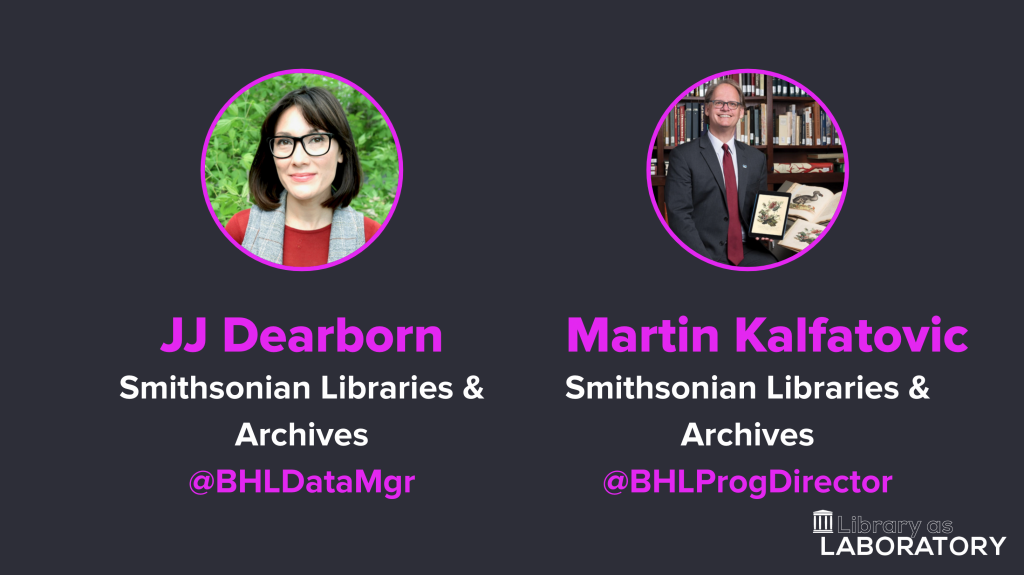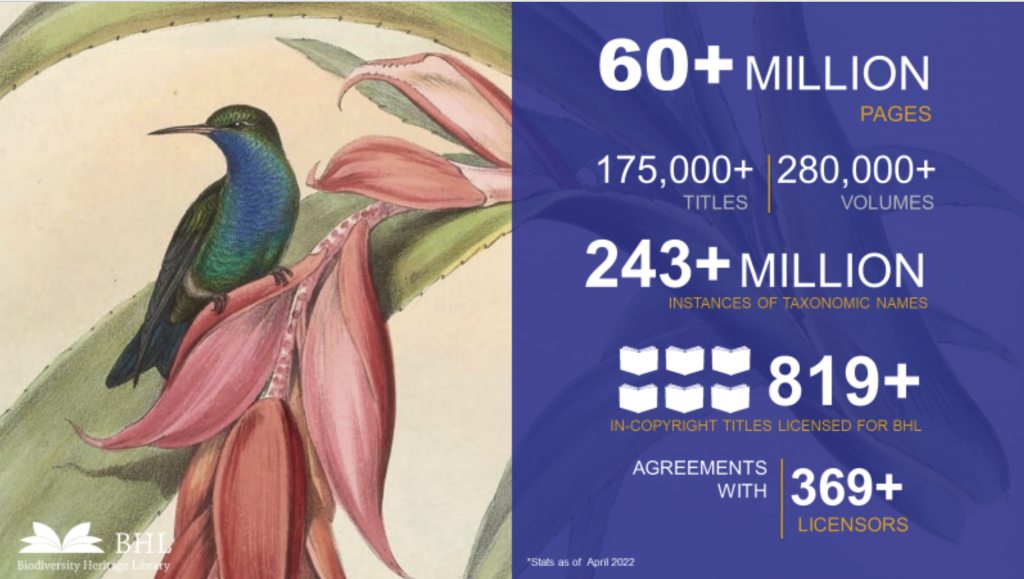
At a recent webinar hosted by the Internet Archive, leaders from the Biodiversity Heritage Library (BHL) shared how its massive open access digital collection documenting life on the planet is an invaluable resource of use to scientists and ordinary citizens.
“The BHL is a global consortium of the leading natural history museums, botanical gardens, and research institutions — big and small— from all over the world. Working together and in partnership with the Internet Archive, these libraries have digitized more than 60 million pages of scientific literature available to the public”, said Chris Freeland, director of Open Libraries and moderator of the event.
Watch session recording:
Established in 2006 with a commitment to inspiring discovery through free access to biodiversity knowledge, BHL has 19 members and 22 affiliates, plus 100 worldwide partners contributing data. The BHL has content dating back nearly 600 years alongside current literature that, when liberated from the print page, holds immense promise for advancing science and solving today’s pressing problems of climate change and the loss of biodiversity.
Martin Kalfatovic, BHL program director and associate director of the Smithsonian Libraries and Archives, noted in his presentation that Charles Darwin and colleagues famously said “the cultivation of natural science cannot be efficiently carried on without reference to an extensive library.”
“Today, the Biodiversity Heritage Library is creating this global, accessible open library of literature that will help scientists, taxonomists, environmentalists—a host of people working with our planet—to actually have ready access to these collections,” Kalfatovic said. BHL’s mission is to improve research methodology by working with its partner libraries and the broader biodiversity and bioinformatics community. Each month, BHL draws about 142,000 visitors and 12 million users overall.
“The outlook for the planet is challenging. By unlocking this historic data [in the Biodiversity Heritage Library], we can find out where we’ve been over time to find out more about where we need to be in the future.”
Martin Kalfatovic, program director, Biodiversity Heritage Library
Most of the BHL’s materials are from collections in the global north, primarily in large, well-funded institutions. Digitizing these collections helps level the playing field, providing researchers in all parts of the world equal access to vital content.
The vast collection includes species descriptions, distribution records, climate records, history of scientific discovery, information on extinct species, and records of scientific distributions of where species live. To date, BHL has made over 176,000 titles and 281,000 volumes available. Through a partnership with the Global Names Architecture project, more than 243 million instances of taxonomic (Latin) names have been found in BHL content.
Kalfatovic underscored the value of BHL content in understanding the environment in the wake of recent troubling news from the Sixth Assessment Report (AR6) published by the Intergovernmental Panel on Climate Change about the impact of the earth’s warming.

“The outlook for the planet is challenging,” he said. “By unlocking this historic data, we can find out where we’ve been over time to find out more about where we need to be in the future.”
JJ Dearborn, BHL data manager, discussed how digitization transforms physical books into digital objects that can be shared with “anyone, at any time, anywhere.” She describes the Wikimedia ecosystem as “fertile ground for open access experimentation,” crediting the organization with giving BHL the ability to reach new audiences and transform its data into 5-star linked open data. “Dark data” that is locked up in legacy formats, JP2s, and OCR text are sources of valuable checklist, species occurrence, and event sampling data that the larger biodiversity community can use to improve humanity’s collective ability to monitor biodiversity loss and the destructive impacts of climate change, at scale.
The majority of the world’s data today is siloed, unstructured, and unused, Dearborn explained. This “dark data” “represents an untapped resource that could really transform human understanding if it could be truly utilized,” she said. “It might represent a gestalt leap for humanity.”
The event was the fifth in a series of six sessions highlighting how researchers in the humanities use the Internet Archive. The final session of the Library as Laboratory series will be a series of lightning talks on May 11 at 11am PT / 2pm ET—register now!